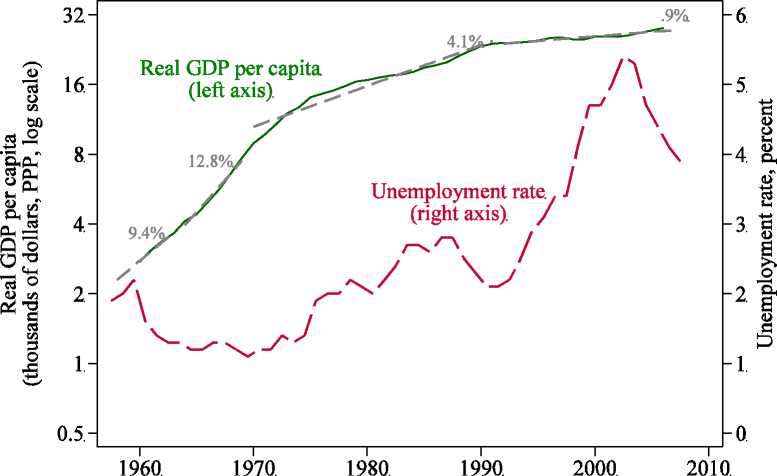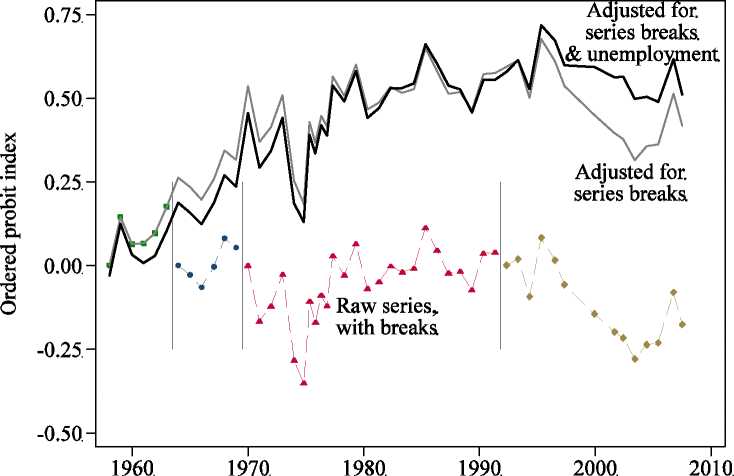Figure 19. Economic Conditions and Life Satisfaction in Japan
Income and unemployment

Life satisfaction

Source: Life in Nation surveys, 1958-2007; BLS Foreign Labor Statistics; authors’ calculations.
Notes: GDP trend growth rates are estimated by regressing log real GDP per capita on time trends. GDP growth trends are calculated for each period
in which comparable satisfaction data were collected (1958-63, 1964-69, 1970-91, 1992-2007).
Raw series, with breaks: These are four separate raw series, each calculated from an ordered probit run on survey time fixed effects, for the sample
periods in which the same survey question was asked (see figure 18). Because the questions changed substantially, these raw indices are only
comparable within each period (these levels are normed so that each series begins at zero). Vertical lines indicate series breaks.
Adjusted for series breaks: The raw life satisfaction indices were pooled, and an OLS regression of satisfaction on series fixed effects, the
unemployment rate, and log GDP per capita was run. The adjusted series subtracts the estimated of the series fixed effects from the raw series to yield
a regression-adjusted continuous series.
Adjusted for series breaks and unemployment: The above series is further adjusted for cyclical influences by subtracting the product of the estimated
coefficient on unemployment and the contemporaneous unemployment rate.
Figures—19
More intriguing information
1. Short report "About a rare cause of primary hyperparathyroidism"2. Industrial districts, innovation and I-district effect: territory or industrial specialization?
3. CAN CREDIT DEFAULT SWAPS PREDICT FINANCIAL CRISES? EMPIRICAL STUDY ON EMERGING MARKETS
4. The name is absent
5. THE ECONOMICS OF COMPETITION IN HEALTH INSURANCE- THE IRISH CASE STUDY.
6. Making International Human Rights Protection More Effective: A Rational-Choice Approach to the Effectiveness of Ius Standi Provisions
7. Measuring Semantic Similarity by Latent Relational Analysis
8. The name is absent
9. The name is absent
10. Climate change, mitigation and adaptation: the case of the Murray–Darling Basin in Australia